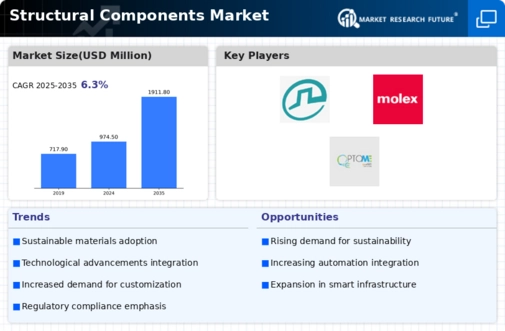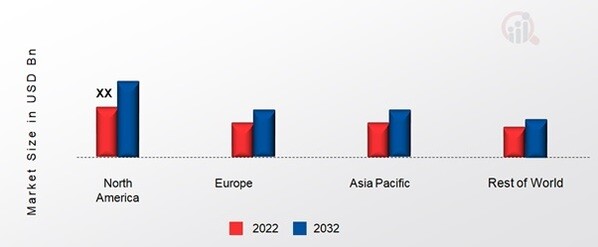Rising Urbanization
The Global Structural Components Market Industry is experiencing a notable surge due to increasing urbanization. As populations migrate towards urban centers, the demand for residential and commercial buildings escalates. This trend is particularly evident in developing nations, where urban areas are expanding rapidly. The need for robust structural components to support high-rise buildings and infrastructure projects is paramount. By 2024, the market is projected to reach 974.5 USD Million, reflecting the urgency for durable and efficient materials. Urbanization not only drives demand but also necessitates innovation in structural design, thereby influencing the overall growth trajectory of the industry.
Sustainability Trends
Sustainability trends are increasingly shaping the Global Structural Components Market Industry. With growing awareness of environmental issues, there is a shift towards eco-friendly materials and construction practices. This trend is evident in the rising demand for recycled materials and energy-efficient designs. Companies are now focusing on reducing their carbon footprint by adopting sustainable practices in their operations. As a result, the market is expected to evolve, with projections indicating a growth to 1911.8 USD Million by 2035. The emphasis on sustainability not only meets regulatory requirements but also aligns with consumer preferences, thereby enhancing market opportunities.
Global Economic Growth
Global economic growth is a crucial driver of the Global Structural Components Market Industry. As economies expand, the demand for new construction projects rises, leading to increased consumption of structural components. Economic indicators suggest that as countries recover and develop, investments in infrastructure and real estate will likely surge. This trend is expected to contribute to the market's growth, with projections indicating a compound annual growth rate of 6.32% from 2025 to 2035. The correlation between economic performance and construction activity underscores the importance of a stable economic environment for the structural components sector.
Market Growth Projections
The Global Structural Components Market Industry is poised for substantial growth, with projections indicating a market size of 1911.8 USD Million by 2035. This anticipated growth reflects the increasing demand for structural components across various sectors, including residential, commercial, and industrial construction. The market is expected to experience a compound annual growth rate of 6.32% from 2025 to 2035, driven by factors such as urbanization, technological advancements, and sustainability trends. These projections highlight the dynamic nature of the industry and the potential for innovation and investment in structural components.
Technological Advancements
Technological advancements play a pivotal role in shaping the Global Structural Components Market Industry. Innovations in materials science, such as the development of high-strength concrete and advanced steel alloys, enhance the performance and longevity of structural components. These advancements enable engineers to design more resilient structures that can withstand environmental challenges. Furthermore, the integration of Building Information Modeling (BIM) facilitates improved project management and efficiency. As the industry embraces these technologies, the market is expected to witness a compound annual growth rate of 6.32% from 2025 to 2035, underscoring the potential for growth driven by technological progress.
Government Infrastructure Initiatives
Government infrastructure initiatives significantly influence the Global Structural Components Market Industry. Many countries are investing heavily in infrastructure development to stimulate economic growth and improve public services. These initiatives often include the construction of roads, bridges, and public buildings, all of which require high-quality structural components. For instance, in 2024, the market is anticipated to reach 974.5 USD Million, driven by these government projects. Additionally, as nations aim to modernize their infrastructure, the demand for innovative and sustainable materials is likely to increase, further propelling the market forward.





